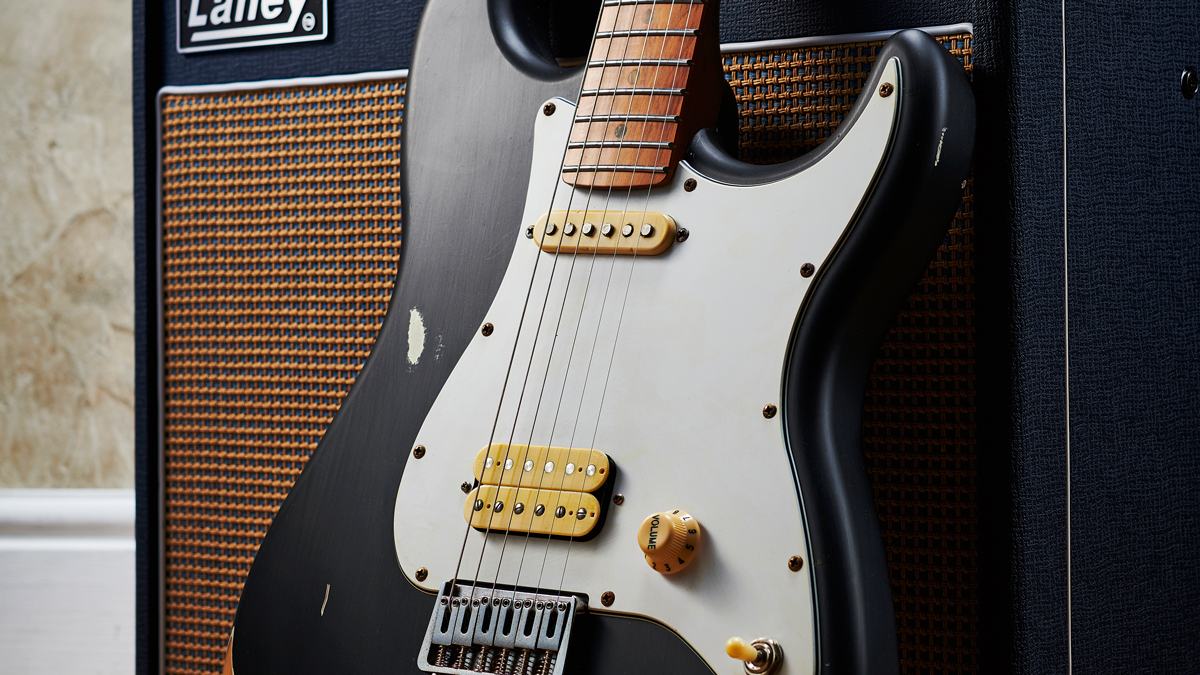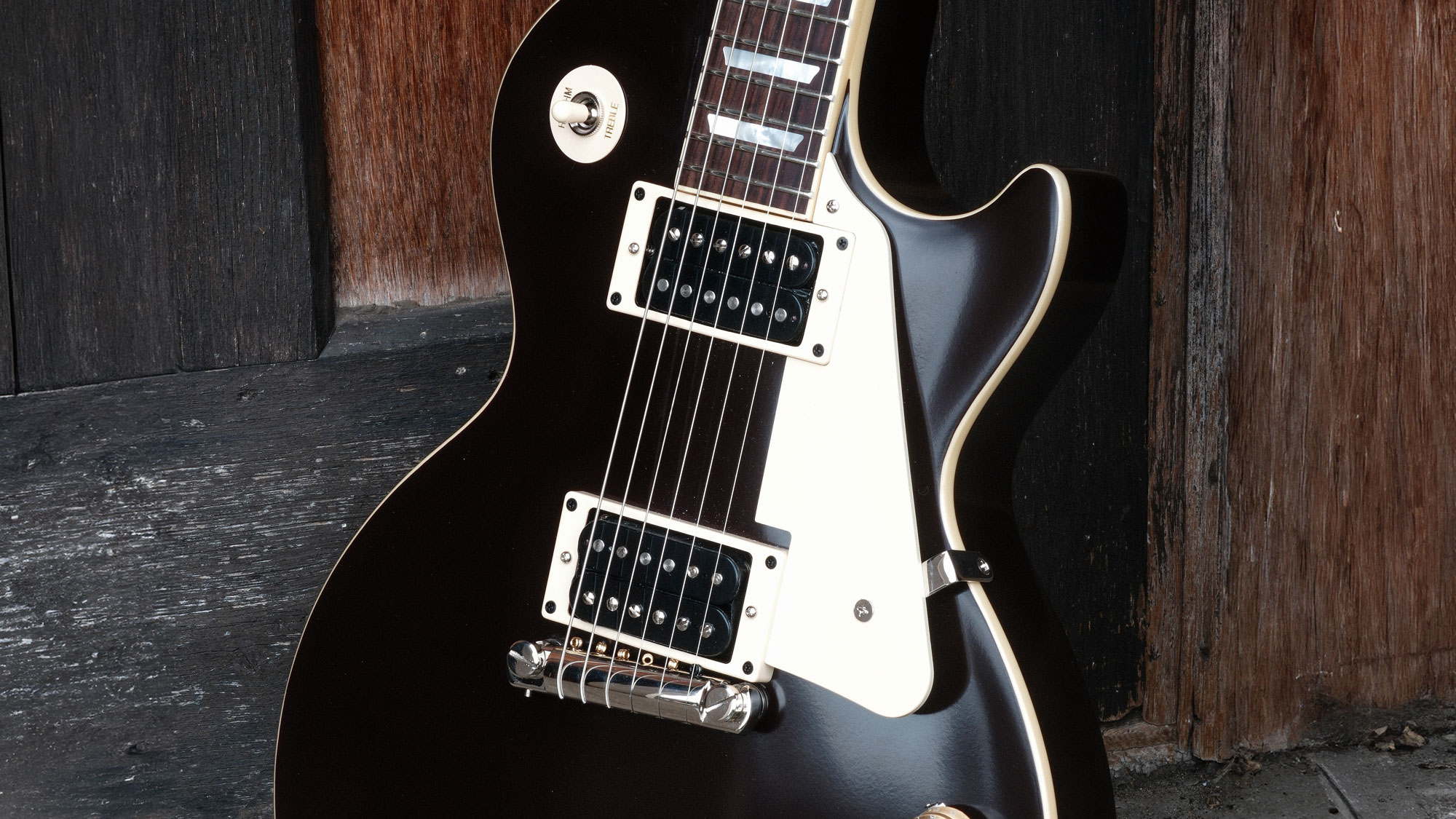Guitar World Verdict
A rusty, beat-up and far-from-authentic-looking relic won’t be for everyone. Yes, a little more fret fettling wouldn’t go amiss, but the overall light weight, good playability and generous dollop of overwound filth from the bridge pickup is pretty entertaining. You want a workhorse? Well, here you go.
Pros
- +
Competent build.
- +
Good neck shape.
- +
Refretted hot-rod feel.
- +
Contrasting pickup voices.
- +
Rock‑solid tuning stability.
Cons
- -
Needs a little more TLC on the frets.
- -
Hardware ageing is a bit overdone.
- -
Relicing is far from authentic.
You can trust Guitar World
How low can you go to find a fit-for-purpose guitar? The answer is pretty low indeed if the popularity of Jet Guitars is anything to go by. Who, you ask?
“Jet Guitars launched in 2020,” explains Peter Shepperson from its distributor, Hal Leonard Europe. “The guitars are made in China, under Jet team supervision. QC is also performed by the Jet team. The brand was founded by Primoz Virant – all the design and specs are made by him. He has had a deep interest in electric guitars for 25 years.”
The Jet range centres on S- and T-styles, starting with the JS-300 series at an in-store price of around £159. Fancying something a little different to feature, we selected one of three relics in the range, the JS-800 with a lofty price of £409 (from GAK) that reminded us of Charvel’s Henrik Danhage signature, albeit with a hardtail bridge rather than a Floyd Rose and a headstock shape that’s inspired by John Suhr.
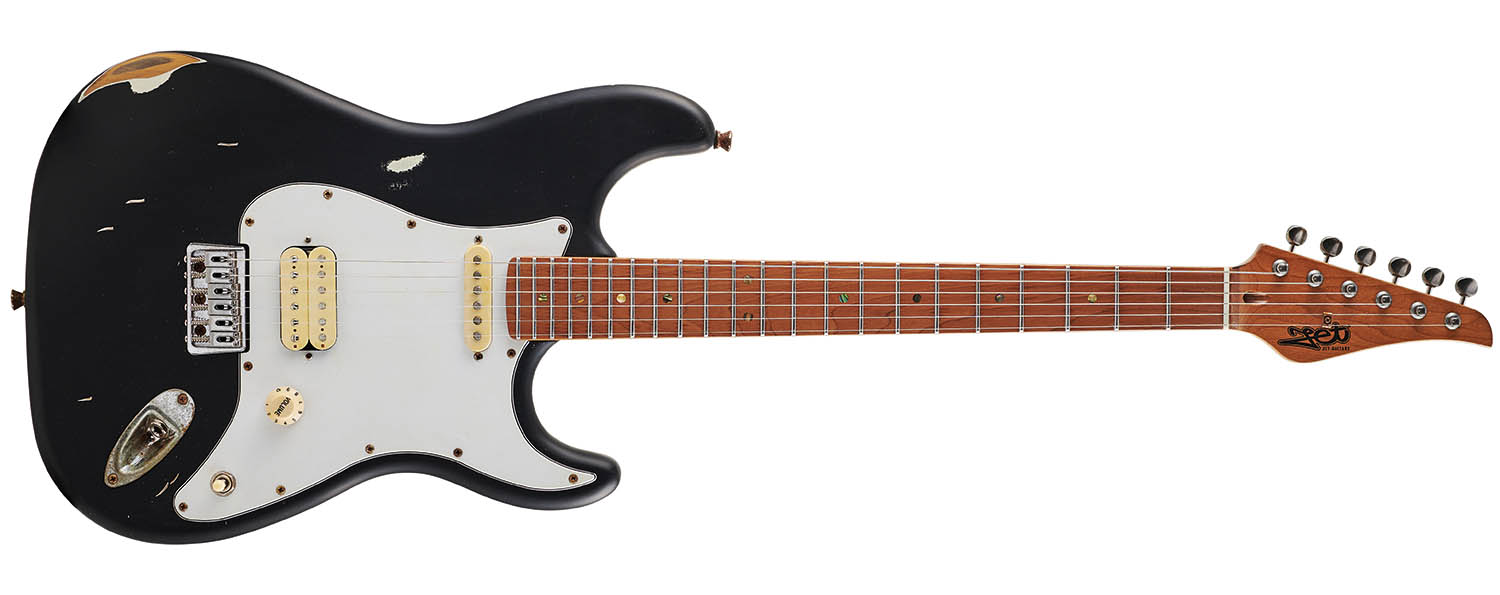
The basswood body certainly fits the style and looks like it’s been over-sprayed with a matt black aerosol can and scraped up a bit. Chuckle away, but one advantage is that the finish is really thin.
It’s quite heavily radiused, even for the style, on its edges and there are some neat touches, such as the rounded heel. There’s no neck plate, and the screws sit in recessed washers.
Nicely on-trend, the neck and separate fingerboard are made from Canadian roasted maple. It’s standard slab-sawn stock, with low-contrast abalone-like position dots and pretty big jumbo frets that sit on a 241mm (9.5-inch) radius ’board. The nut is quoted as bone and it’s nicely nut.
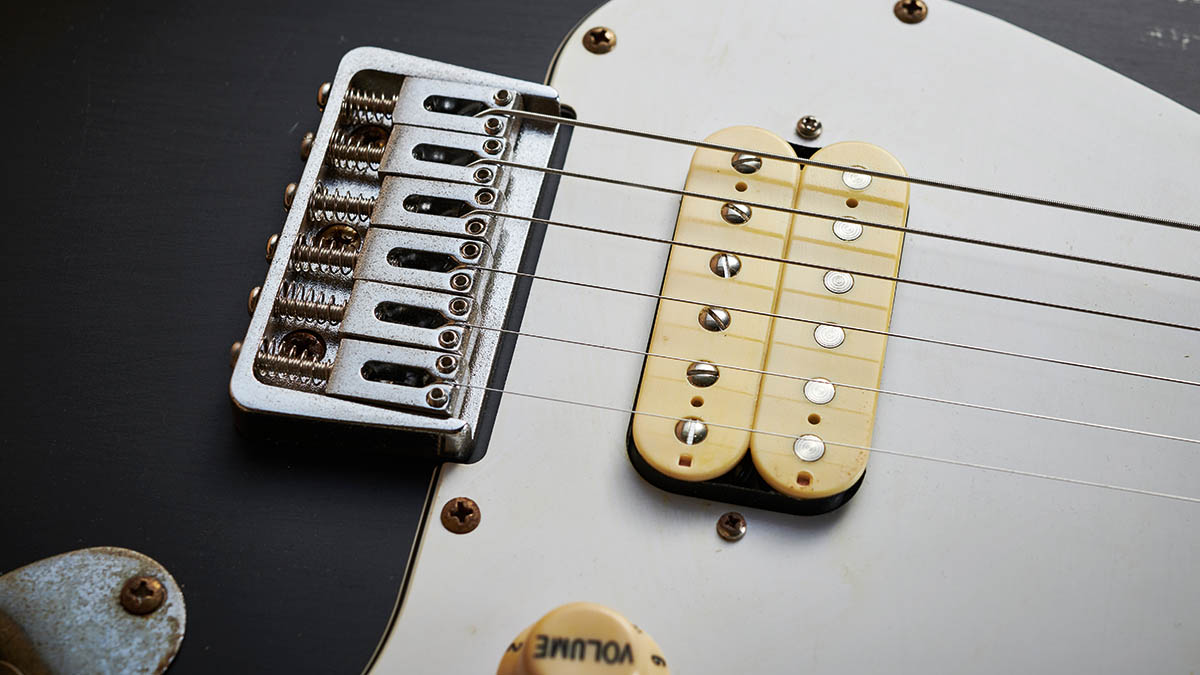
Bells and whistles? Not really. The tuners are basic vintage types but work perfectly well, and the hardtail walled bridge features steel block saddles. Like the rest of the hardware it’s aged.
All the latest guitar news, interviews, lessons, reviews, deals and more, direct to your inbox!
It might look in need of a clean, but if you’re a fan of lighter weight guitars, then you’ll enjoy this
To be honest, a little over-aged: all the screws are very rusty, the dished jack plate appears heavily corroded, while the amount of rust on the strap buttons suggests it might have doubled as a garden decoration at some point.
Back to the hot-rod style, we get a double-cream DiMarzio-style humbucker at the bridge paired with a lonely-looking single coil at the neck with vintage-stagger poles with a very rounded and worn cream cover. Controls? You get a volume, again with a rounded worn knob, and a three-way toggle selector where the tone control should be. Basic? That’s fine by us.
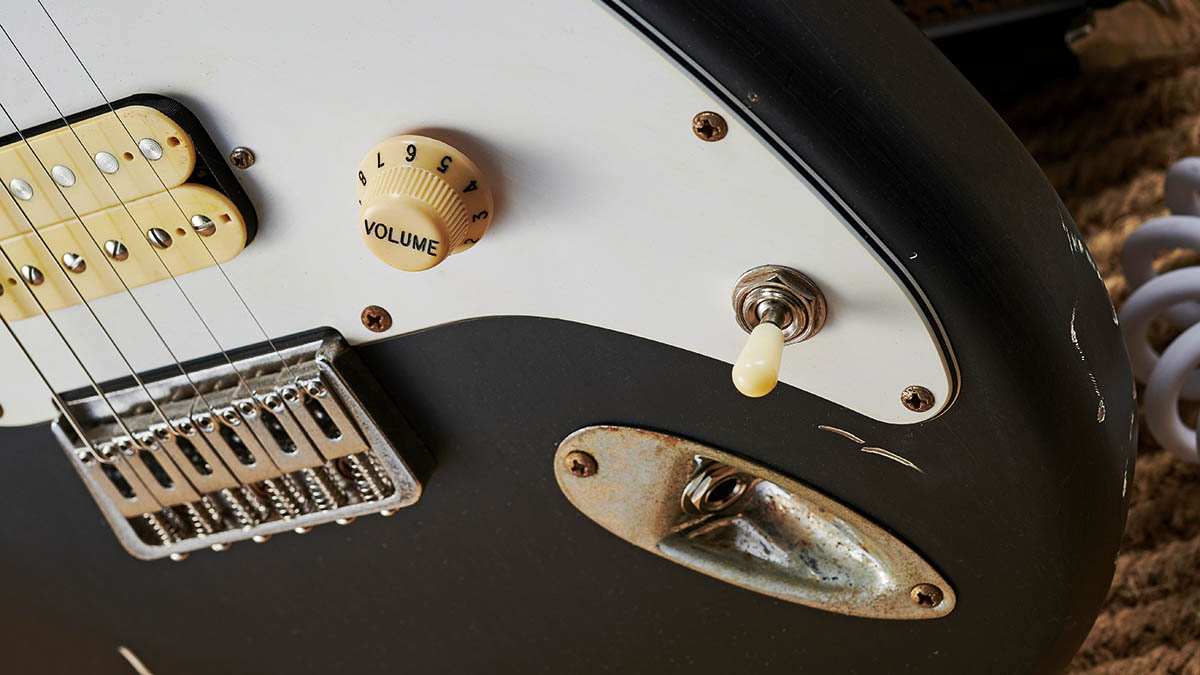
Feel & Sounds
Okay, it might look rather, err, rudimentary and in need of a clean, but if you’re a fan of lighter weight guitars, then you’ll enjoy this. The neck feels rather good, too, a deep-ish C with fairly robust shoulders – 21.6mm deep at the 1st fret, 22.9mm by the 12th – and after a quick truss rod tweak it really plays rather well.
Yes, the jumbo frets could do with a final polish and a little work to round the ends, but we’ve seen (and owned) worse. The hardtail bridge means tuning is rock solid and it has a really lively response.
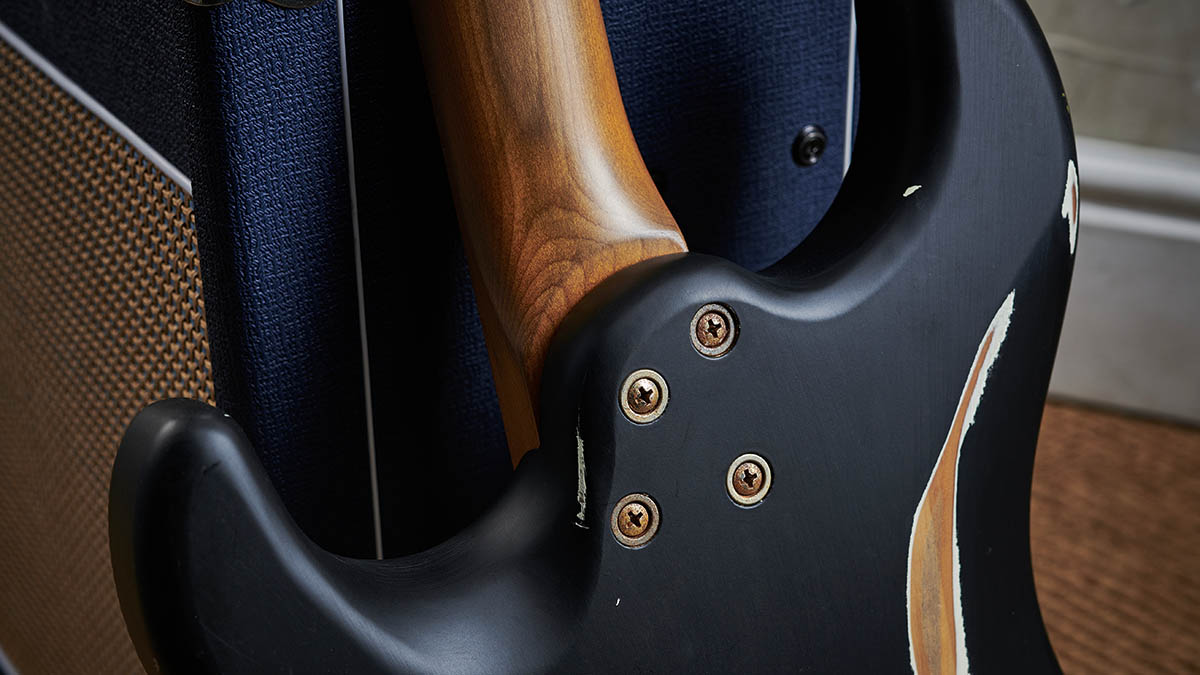
The bridge pickup style suggests an overwound beast and that’s what we get here, taking this writer back to the late ’70s when ‘Frankenstein’ self-modding was the only way for the wannabe guitar hero.
The contrast between bridge and neck, of course, is huge, the single coil sounding thin and bright after the bridge’s bomb blast.
It is a little polite-sounding, certainly when compared with our PRS SE Silver Sky reference, while the three-way toggle switch feels like a gear shift stick – light canter to full-on gallop. There’s a rock ’n’ roll/punk-era rawness here that’s very hard not to like.
Specs
- PRICE: €469 (c. $495 / £409 in store)
- ORIGIN: China
- TYPE: Double-cutaway solidbody electric
- BODY: Basswood
- NECK: Canadian roasted maple, bolt-on
- SCALE LENGTH: 648mm (25.5”)
- NUT/WIDTH: Bone/41.89mm
- FINGERBOARD: Roasted maple, abalone-like dot markers, 241mm (9.5”) radius
- FRETS: 22, jumbo
- HARDWARE: Walled 6-saddle bridge with through-body stringing, Kluson-style vintage tuners – aged chrome/nickel-plated
- STRING SPACING, BRIDGE: 52.5mm
- ELECTRICS: Double-cream open coiled humbucker (bridge), vintage stagger single coil (neck), 3-position toggle pickup selector switch, master volume
- WEIGHT (kg/lb): 3.01/6.62
- RANGE OPTIONS: Plenty of choice that starts with the JS-300 (€169). Other reliced models include the JS -350 T-style (€449) and the HSS S-style JS-400 (€359)
- LEFT-HANDERS: No
- FINISHES: Black Relic
- CONTACT: Jet Guitars

Dave Burrluck is one of the world’s most experienced guitar journalists, who started writing back in the '80s for International Musician and Recording World, co-founded The Guitar Magazine and has been the Gear Reviews Editor of Guitarist magazine for the past two decades. Along the way, Dave has been the sole author of The PRS Guitar Book and The Player's Guide to Guitar Maintenance as well as contributing to numerous other books on the electric guitar. Dave is an active gigging and recording musician and still finds time to make, repair and mod guitars, not least for Guitarist’s The Mod Squad.
